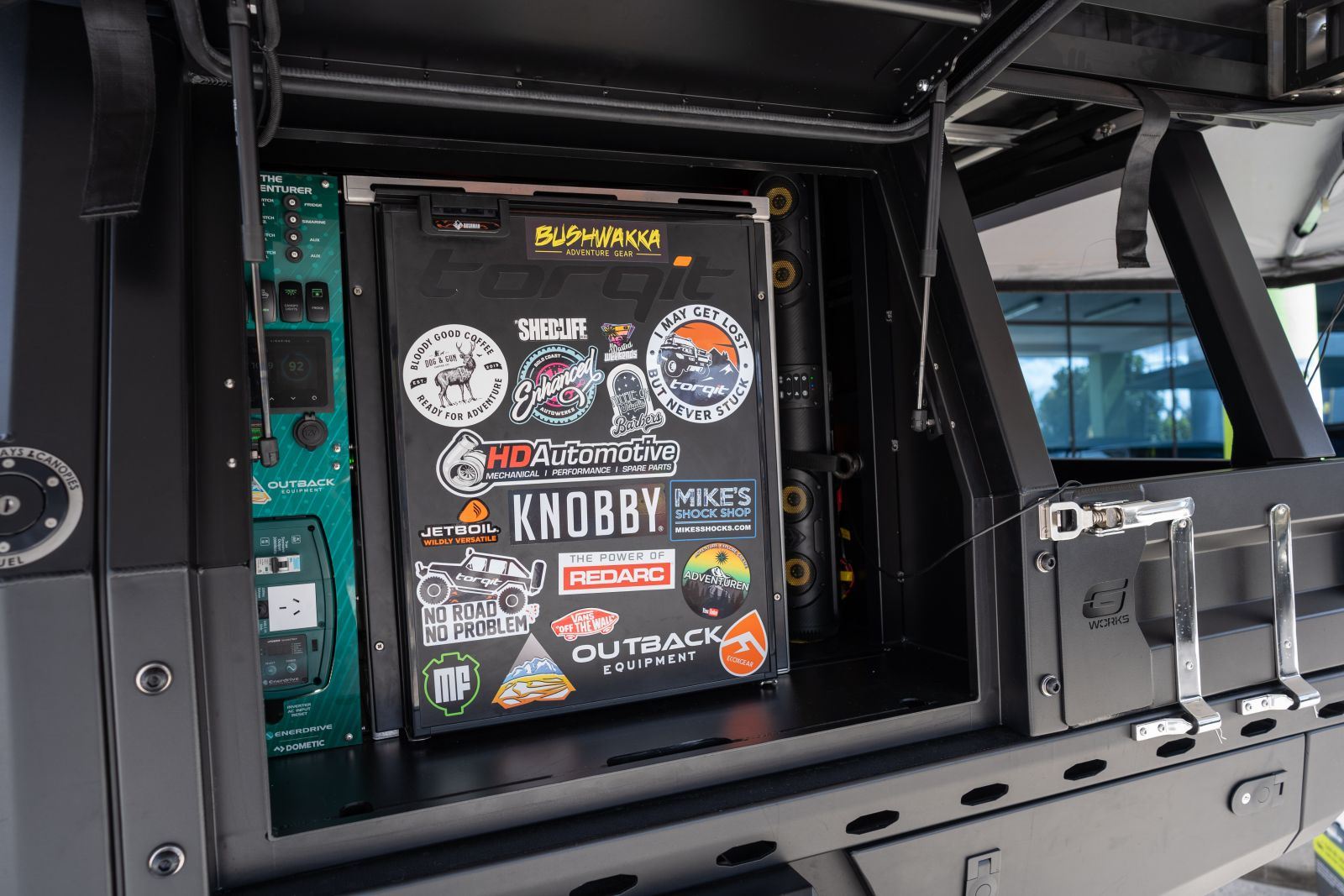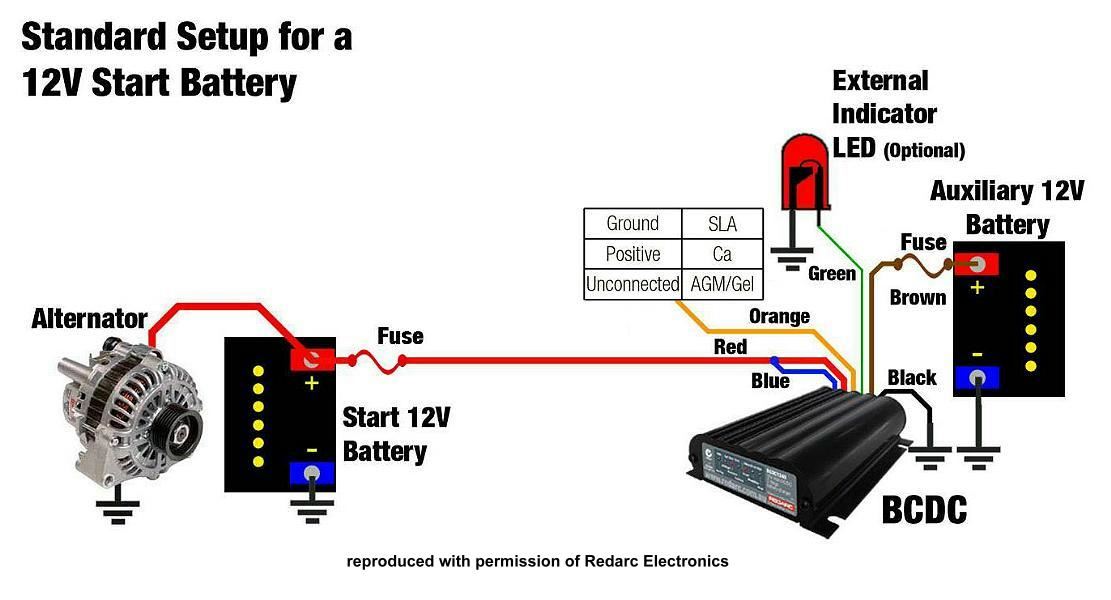
Without a doubt, we always bring a tonne of different equipment when we go offroad so we can enjoy the comfort of home in the outdoors. Fridges, cell phones, laptops, and cameras are among the items that keep us linked and record memories. They all use a lot of battery power, regardless. The likelihood of being able to power all your devices and still be able to start your engine so you can drive home is quite low if your car only has one battery (the starting battery). You're going to require a dual battery system if you need your vehicle to power equipment like a portable fridge, safety lights, or radios while your four-wheeler is parked. Install a 4WD dual battery system to prevent power loss to your equipment and to guarantee that your car is always ready to start.
How do dual batteries work?
In a dual battery system, a secondary battery is used in addition to the starter battery of the car. The auxiliary equipment and accessories are powered by this secondary battery. Both batteries work as two separate systems in a twin battery setup. Your starter battery and alternator operate together to power your car's electronics when the engine is running. Your secondary battery powers any equipment and accessories connected to your car when it is turned off, so you can use your portable refrigerator, lights, and inverters without having to keep your engine running. This is made possible by the function of a Voltage sensitve relay (VSR) or a DC to DC charger, which separates your starter battery from your secondary battery when the voltage drops too low to start the vehicle.
What do you need for a dual battery set up?
In order to avoid your starter battery from running down and rendering your engine incapable of starting, it is essential to keep each battery operating independently of one another. Both batteries will be charged adequately using a VSR (voltage sensitive relay) or a DCDC charger. A few 4x4 dual battery isolators can enable your starter and secondary batteries to link up, allowing you to jump-start your vehicle in the event that the car battery unexpectedly loses voltage. But not all isolators operate in this way. This is because deep cycle batteries are designed to produce low amounts of draw over a long period of time compared to start batteries that are designed for large draws and high cranking situations for short periods of time. When you use a deep cycle battery to power your equipment, you can relax knowing that you'll have a steady source of power and shouldn't have to worry about running out of power.
(1).png)
Types of batteries you can use in a dual battery set-up:
AGM batteries are the most common option for any setup and designed for deep current draw for long periods of time like when you are away camping. Most AGM batteries are fully sealed meaning they don't release any dangerous gases when charging so they can be stored inside the cabin of car like behind the back seat or in the boot. Instead of entirely draining and recharging during a use cycle, this type of battery is better suited to partial use and recharge of 50%. AGM batteries are cheaper than lithium options but are nearly two or three times the weight of lithium of the same AH rating. AGMs also have a much lower cycle rating compared to lithium. AGM's are generally not designed to be stored in high heat applications like the engine bay of a car, some companies like Optima Batteries have hybrid AGM's designed for under-bonnet applications.
LITHIUM: When utilised as deep cycle, lithium batteries are the most durable battery because of their lighter weight and greater discharge potential over AGM. These, however, cannot be installed beneath a car's hood due to heat limits and are generally more expensive than AGM. Lithium batteries can be mounted in any direction as long as there is adequate space around it to ensure ventilation. Batteries need to breathe in order to operate properly, so if you are chucking one in a box, underneath a bed in a van build, make sure you vent that area.
What size cable for dual battery?
The cable used for dual battery systems varies depending on what charger you are using and how far apart your start and auxiliary battery are from each other. Cables should be run with as few bends and joins in the most direct path possible, remembering hot exhaust and moving parts should be avoided where possible. Voltage drop causes heat and heat causes fires so always refer to the installation instructions when wiring your dual battery system to make sure you are using the correct size cable. A great example of overcoming voltage drop is the Enerdrive DC2DC 40a Charger for lengths of 2-5 metres recommend a minimum 10mm2 cable or 5-10 metres using 25mm2 cable. Be mindful not to run cable where it will likely rub, whenever it must pass over a sharp metal corner using something like braided sleeving or convoluted split tubing to protect the cable. Give the cable run a little leeway, loose to touch but not loose and floppy. Flexibility must be allowed for the cab, chassis, and tray backs. Use a rubber grommet anywhere wires pass through metal surfaces, such as door frames and firewalls, to reduce rubbing between the steel and the cab also keeping the cabin watertight. Making sure all connections are tight, clean and secure is just as important as the chargers and batteries themselves, so using the right cable size and proper connections is a must.
What size fuse to use for a dual battery setup?
How big of a fuse you need for your dual battery system is much like working out the cable size, always check the installation instructions of your product, but a general rule of thumb is 1.2x -2x the size of the current going through the charger. DCDC chargers generally use fuses or manual reset circuit breakers that are 20% larger than the power it can produce, E.g Redarc BCDC1250D 50a charger only needs a 60a fuse or circuit breaker. Voltage-sensitive relays that are capable of linking both start and auxiliary batteries use fuses or circuit breakers of the same rating as the relay itself for example Redarc Smart Battery Isolator has a 100a rating and recommends a 100a fuse or circuit breaker to utilize the battery link feature. Fuses should be placed close to each individual battery's positive (+) terminals. These fuses are intended to safeguard these high current-carrying cables in the event that they become damaged and come into touch with the vehicle, potentially sparking a fire. In a system with two 12v batteries, fuses act as the safety valve. Contrary to what you may think, automotive electrical systems operate at substantially higher voltages and current densities. The exterior shell that protects electrical and automotive cables might become damaged which is why is it is so important to fuse electrical systems in cars. When cables wear through and come into contact with the metal of the vehicle or water that connects the components of a car's electrical circuit a "short" or short circuit is generated and electricity can flow through the system without restriction if left unchecked current flow causes cables and electrical parts to heat up to the point of overheating, fire, or explosion (in the case of batteries).
.png)
Fuses are electrical circuit components that are intentionally designed to fail before your large, heavy cables and electrical connections do. They stop the malfunction by stopping the current flow. Fuses are necessary. A blown fuse signals that there is a problem with the electrical circuit, electrical issues are not self-correcting you should always locate and fix the issue. In contrast to wires, where "larger is better," fuses must be the right size for the task at hand. Installing a larger fuse puts the circuit at risk of being destroyed. Your fuse should be able to handle slightly less current than the cable it connects to, in order to achieve its intended purpose of protecting your gear.
(1).png)
How to install a dual battery system:
If you're thinking of installing your dual battery system yourself, check if you're up for the job by reading our quick step-by-step instructions.
- Make sure you have enough wire to connect your second battery to your equipment before mounting the second battery.
- Remove the starter battery.
- Set the voltage-sensitive relay in place (VSR). Place the VSR away from any hot or moving components and close to the primary battery.
- lengthen cables as needed.
- After removing 15mm of insulation, attach lugs to the cable's bare ends by crimping them in place. To create a waterproof seal, slide the heat shrink over the lug and apply heat.
- To ground the relay, use the black wire that is connected to the VSR.
- Connect the VSR to the primary battery.
- Earth the second battery to the chassis
- The VSR should be fastened to a mounting plate. Both batteries may not have positive connections attached.
- The starter battery should be connected first, followed by the second battery, for the negative leads.
- Using a multimeter, check the functionality of your system.
- Enjoy your basic 12-volt dual battery system with the added bonus of being able to say you did that yourself.

Your 4x4 dual battery system may deteriorate over time, just like any other part of your car, especially if you travel off-road and are exposed to the elements. You need to perform routine maintenance to keep your charging system operating efficiently. Check your system for any damage to the battery, DC charger, connections and battery tray before you leave. The easiest approach to keep things working smoothly is to keep your system clean and in good shape.
How much is a dual battery system?
It really does depend on your budget but a simple dual battery system with just a manual isolator switch shouldn't set you back more than a few hundred dollars. The best way to find out what kind of equipment your going to need is to calculate how many amps all of the accessories pull when turned on and then add an extra 20% for emergencies. This will give you a good indication of whether you're going to need to add solar panels or a battery charger. Luckily we stock a huge range of gear for every budget and every kind of project, from batteries to isolator switches, cables, fuses, battery chargers, solar panels, inverters and much more right here.


.png)
Leave a comment